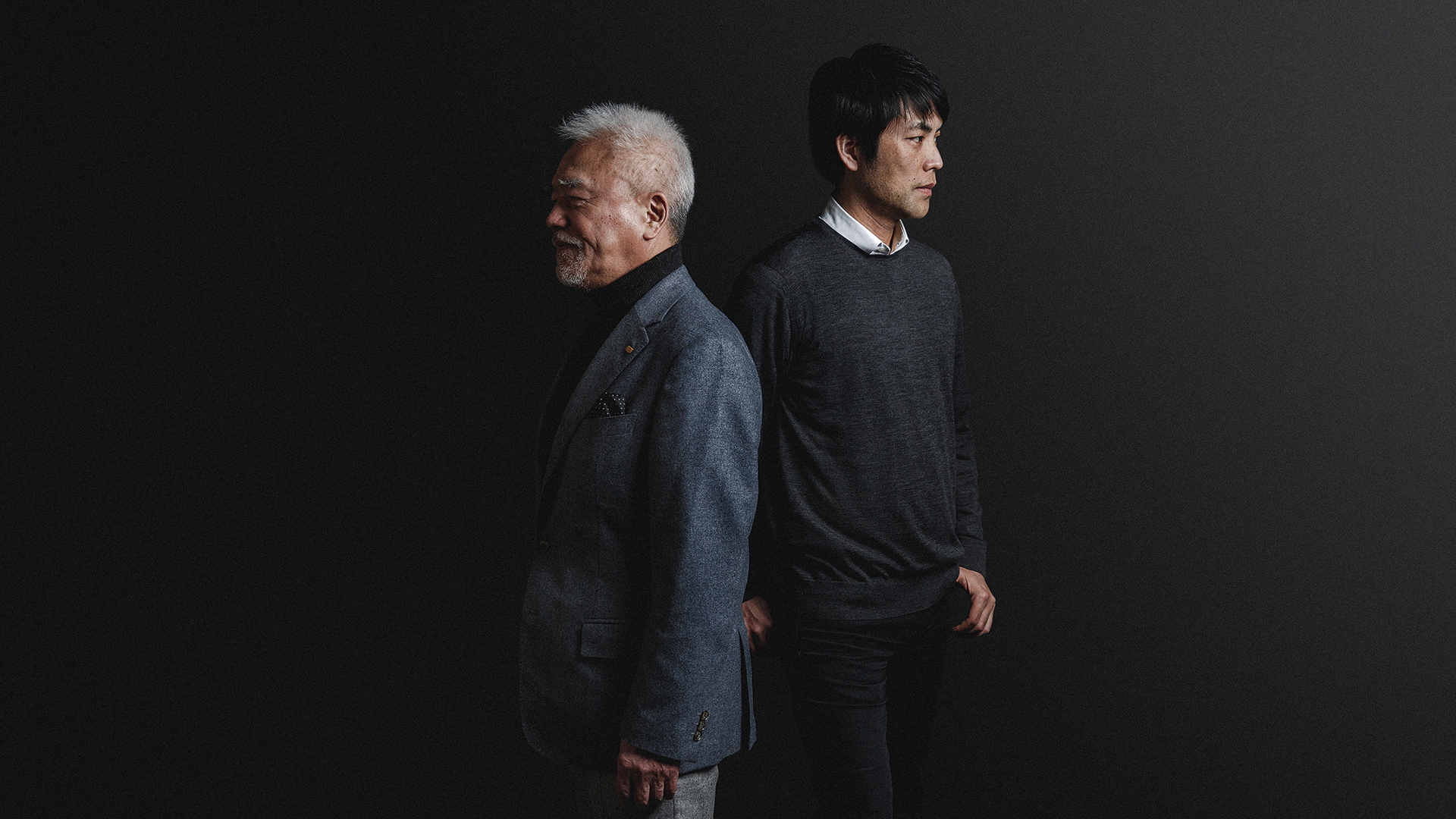
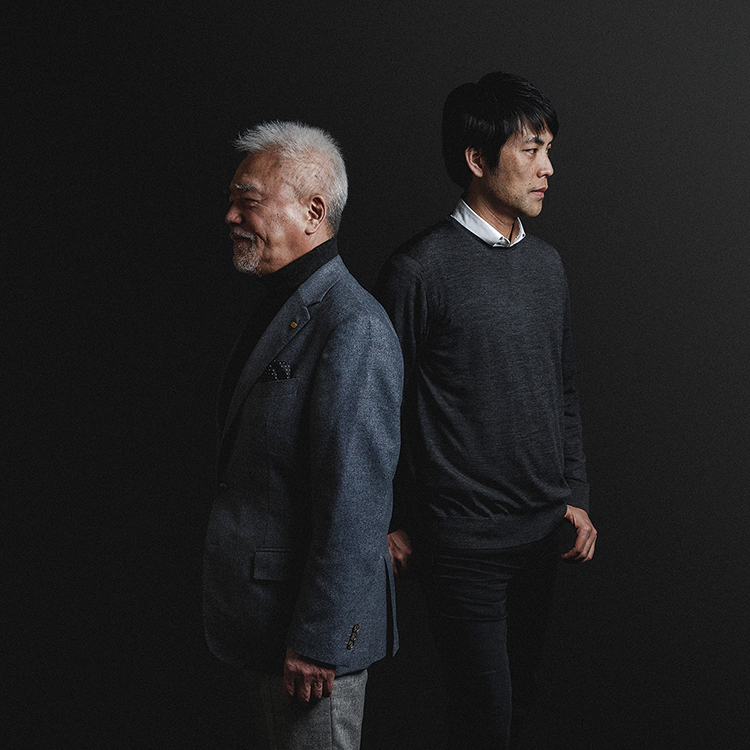


Junzo Tateno
CEO of UNION Corporation
Born in 1947, Junzo Tateno graduated from the Faculty of Law at Konan University (Kobe, Japan) in 1970
and entered Aoki Construction that same year. He joined UNION in 1973 and became CEO and President in 1990.
He serves as Chairman of the Union Foundation for Ergodesign Culture, a Public Interest Incorporated Foundation,
and the Osaka Industrial Bureau. He is also Vice Chairman of the Osaka Chamber of Commerce and Industry.
Shohei Shigematsu
Architect. Born in Fukuoka prefecture in 1973. After graduating from Kyushu University, he studied in the Netherlands. Currently he is a partner at OMA Architectural Planning Group and a representative of the New York office. Since joining the company in 1998, he has led the majority of OMA's continental American and Asian projects. He also leads design projects from private housing to museums, commercial facilities, and urban planning projects from concept to completion. He now helps guide the entire OMA. "His major works include CCTV (China Central Television) New Headquarters, Prada "Waist Down" Travelling Exhibition, Milstein Hall Cornell University, Coach Omotesando Flagship Store, Kanye West Seven Screen Cinema, Quebec National Museum of Art, Bogotá Centro Administrativo Nacional (CAN), Post-Hurricane Sandy Urban Water Strategy for New Jersey, Quebec National Beaux Arts Museum, Faena Arts Center (Miami), Marina Abramović Institute (New York), Cai Guo-Qiang studio (New York), and the Dominican Republic Pavilion at the Venice Biennale. As a developer, his current projects include high rise towers in San Francisco, New York and Miami. He is currently working on a wide variety of projects all over the world. Since 2013 he has led the Alimentary Design Studio which considers the relationship between food and urban architecture at the Graduate School of Design at Harvard University.
1
TATENO
Are you living in New York now?
SHIGEMATSU
Yes. In 1977, I went from Fukuoka to Holland. Including the time studying for my graduate degree, I was there 9 and a half years. Then in 2007, I moved to New York for the first time. So it has already been 10 years.
TATENO
At OMA?
SHIGEMATSU
Yes, OMA for the whole time.
TATENO
Wow.
SHIGEMATSU
Well, I moved to New York to become the director here. There were so many changes to get used to, but now I'm finally feeling settled.
TATENO
I see... I really like New York.
SHIGEMATSU
Oh, is that right?
TATENO
Yes, I've been many times.
SHIGEMATSU
What do you like about it?
TATENO
Well, it's refreshing. You feel the energy...It has so much to offer, museums, musicals and jazz. The city feels alive...I was there for 9/11.
SHIGEMATSU
I was too.
TATENO
At that time I was a volunteer for “Save the Children” .
SHIGEMATSU
What's that?
TATENO
You haven’t heard of them? Save The Children.
SHIGEMATSU
Save The Children? It rings a bell, but...
TATENO
It’s quite famous in the U.S. I was at their head office in New York and left about 30 minutes early to avoid the rush hour crowds. It was the right decision. If I hadn't left at that time I would have been caught up in the disaster. Even though it wasn't that building, who knows what could've happened if I hadn't left early?
(A short silence while looking at exchanged business cards)
SHIGEMATSU
What!? This is the same building as ours!
TATENO
Really? *Laughs.*
SHIGEMATSU
Number 180
TATENO
Really?
What floor?
SHIGEMATSU
The Thirteenth
TATENO
Come see us sometime. I can't believe it's the same place. *Laughs.* There are lots of architects in the buildings around there.
SHIGEMATSU
Yeah, there are. Originally many of the buildings were printing factories, so they were very strongly built. Now most have been subdivided and are used by creative firms.
TATENO
Wow.
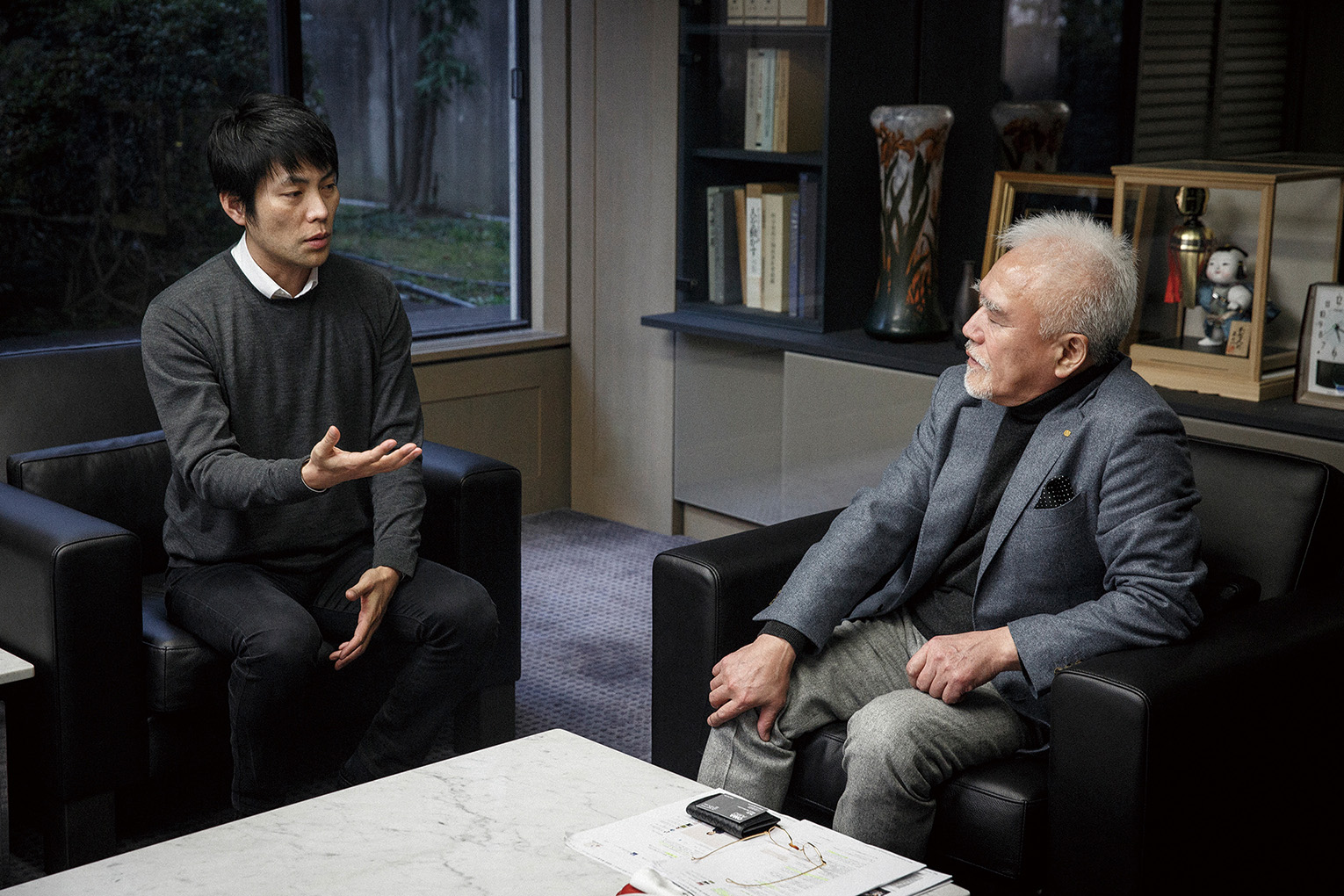
TATENO
So why did you choose the Netherlands?
SHIGEMATSU
I lived in the U.S. for a short time when I was a child because of my parents' work.
TATENO
Really?
SHIGEMATSU
I lived in Boston. Even though I could speak English, tuition in the U.S. was very high. I thought about applying for university in England, but I wanted to go somewhere that wasn't an English-speaking country. I felt I couldn't differentiate myself by going to the same places as everyone else. Strangely enough, most people knew little about the Netherlands. I thought it would be interesting.... so I went.
TATENO
That makes sense. Is it a good place for architecture?
SHIGEMATSU
Just at that time, the Netherlands was beginning to attract attention. Rem Koolhaas was becoming famous around the world, and he worked at OMA, the same company I later joined.
TATENO
Is OMA a Dutch company?
SHIGEMATSU
Yes, but I didn't go to the Netherlands because of OMA. My goal was to go to graduate school. Everyone went to England or the U.S. for their graduate degrees. I felt I would have just created more competition for myself If I had studied in those countries, and I thought it would be more interesting to go somewhere different. When I think about it now, it was an easy decision.
TATENO
*Laughs*
I'm sure it wasn't easy. But it worked out well.
But it worked out well.
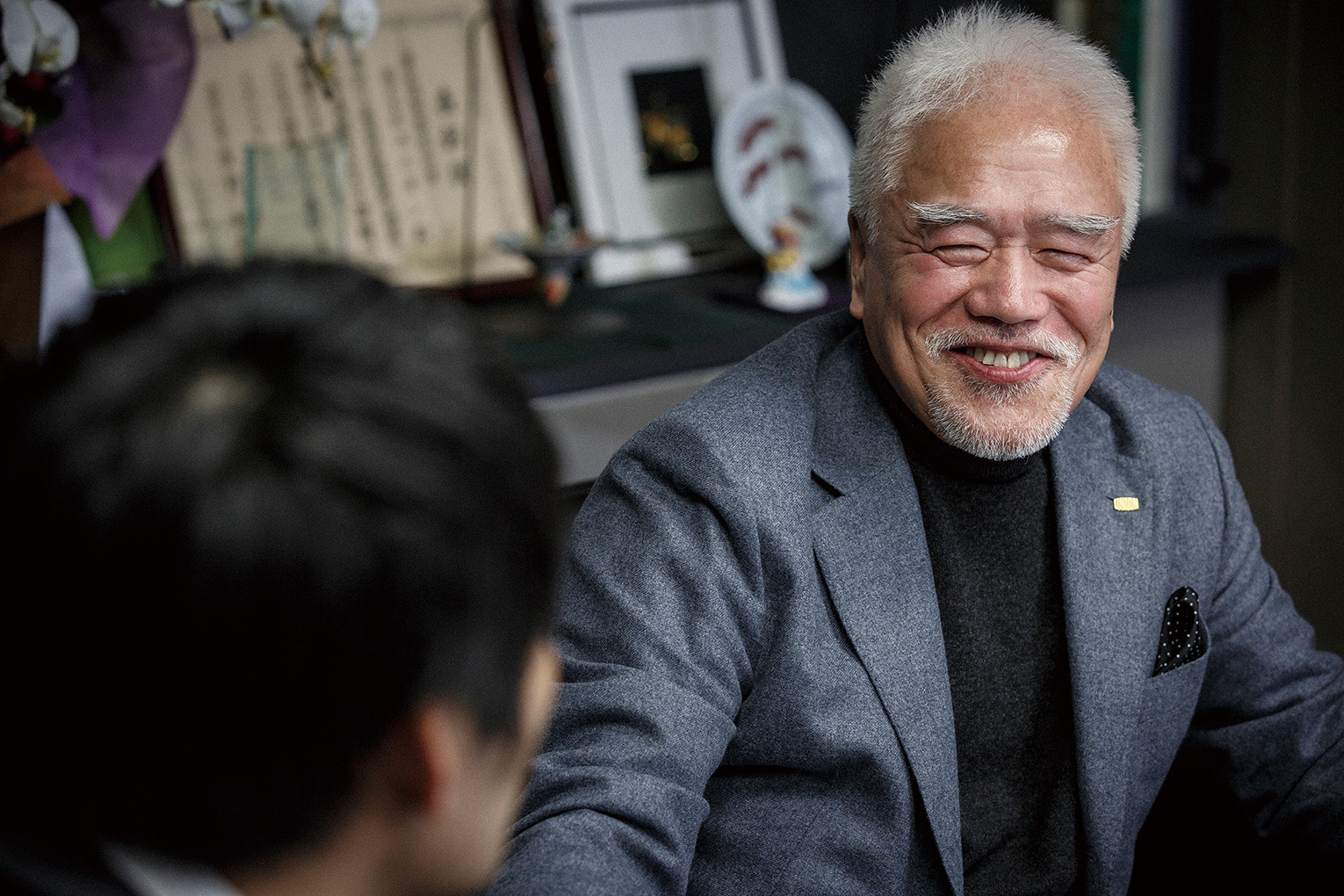
SHIGEMATSU
It worked out well. OMA designs buildings that skillfully blend aspects of design and academics. I think in Japan there are two types of firms, ones that foster the growth of talented young employees and ones that don't. This is the case even with the more illustrious firms. Zaha Hadid, who won the first competition to design the national stadium... She's actually a former OMA employee.
TATENO
She worked for OMA?
SHIGEMATSU
There is a famous architectural school called AA in England. OMA’s Rem Koolhaas and Zaha Hadid are both alumni.
TATENO
Really?
SHIGEMATSU
I thought that I wanted to go to a firm that produced talented young employees like that.
TATENO
That makes sense. It's rare for architects in Japan to become famous after they start out working independently.
SHIGEMATSU
Japan has a culture of lifetime employment. After leaving a respected firm, I feel it is almost expected, that you will continue to produce work in the same style as the firm you left. In a teacher-disciple type of way. The opposite is true abroad, you would likely be criticized for doing that. It's a cultural difference, but firms that foster the growth of talented young employees will always be there, and this is the same for architectural firms all over the world.
TATENO
But now in Japan there are very few opportunities for young people. Most young architects are living abroad. For them the chances of finding a job in Japan are very slim.
SHIGEMATSU
That’s why, no matter how desperate the situation may be, it's likely the tides will turn. I think that leaving Japan creates new opportunities. In the end, nothing will change without the power and will to change the industry itself.
TATENO
That’s true.
SHIGEMATSU
Also, general contractors and construction design organizations build over 90% of houses.
TATENO
Yes.
SHIGEMATSU
The current situation needs to be changed.
TATENO
That means, to a certain degree, changing the way the home owners, or the clients of those companies, think...
SHIGEMATSU
That’s right! In the U.S. they say it isn't only about educating the architect, but also the client. If clients are architecturally illiterate, there will be no use for talented architects. Change needs to start there. Architecture is still perceived as a difficult and elite profession. We need to create a connection with society by getting more people out there who can talk about architecture. I think people in design associations and advertising firms would be especially good at this.
TATENO
That's also true. It would be great if there were more competitions for architectural projects too.
SHIGEMATSU
Yeah, but in Japan you need experience to even enter most competitions.
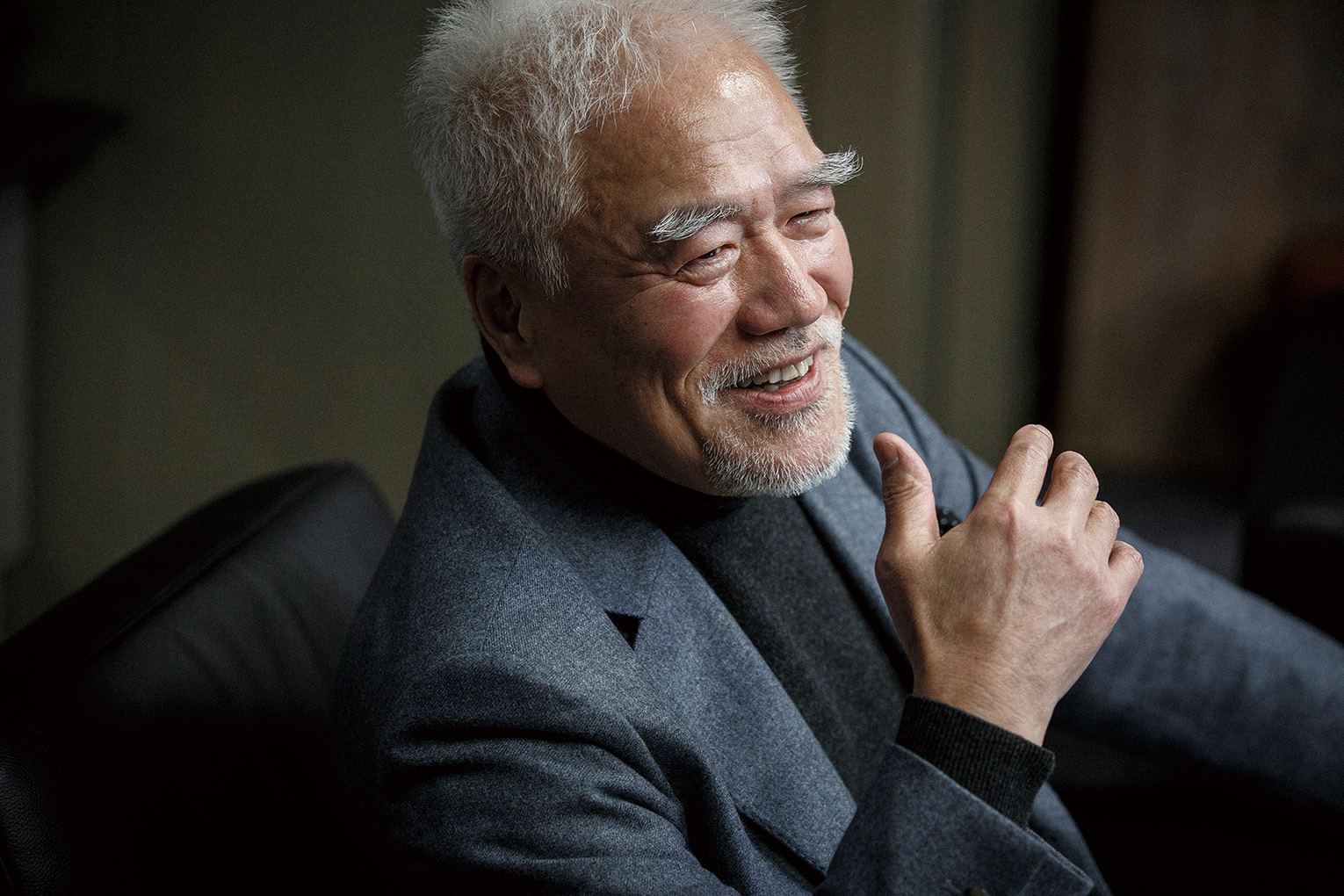
TATENO
People aren't given opportunities.
SHIGEMATSU
Yes.
TATENO
There aren't many chances for young people in Japan. I think that will result in an increasing exodus of talented young people.
SHIGEMATSU
In my case, I finally have good projects in Tokyo and Fukuoka. Even though I left Japan once, in the end I wanted to return. I feel like I want to give something back my country.
TATENO
It’s easier to be accepted here after making a name for yourself abroad, but it’s hard to say if you could have succeeded in that way if you had only worked in Japan. I think it would have been difficult...
SHIGEMATSU
It would've been impossible. *Laughs.*
TATENO
*Laughs.*
SHIGEMATSU
I’m from the Kyushu countryside, I think I left Japan because I had a kind of intuition. I was born in 1973: the 2nd baby boom generation. You hear about it a lot in the media as being the most competitive era for everything from entrance exams to finding employment. On top of that, it also coincided with the bubble, which burst just when I had entered university. The environment at that time was very pessimistic and that gave rise to the idea of leaving Japan.
TATENO
I’m from the first baby boom. It seems people from those circumstances have more vitality.
SHIGEMATSU
True.
TATENO
I was born after the war in 1947. Postwar, there was a massive population increase.
SHIGEMATSU
Yes.
TATENO
People from that time really do have vitality.
SHIGEMATSU
They do. They are acclimated to competition. It may be why so many people from my generation went overseas. But in the end, Japanese people always want to return to Japan. I had this vague notion that Japan couldn’t offer me a bright future, and that therefore I just wanted to fit in overseas. Most Japanese people just go to live overseas for two or three years as a status symbol. I left intending to spend my life abroad. I think that’s the difference. If more people stayed abroad for longer, things might start to change.
TATENO
Companies can’t survive in our industry without a global perspective. For the first time in years, architecture's profile has risen sharply because of the Olympics. It fell off for more than 20 years until if finally leveled off. And now, in the last 6 years it has risen again, but it's highly unlikely that will continue. Actually, I think it can only decline after this. Companies are going to have to go abroad to survive. Despite this, young people aren't venturing out as much as you would expect. I really want more young people to have a stronger desire to go overseas.
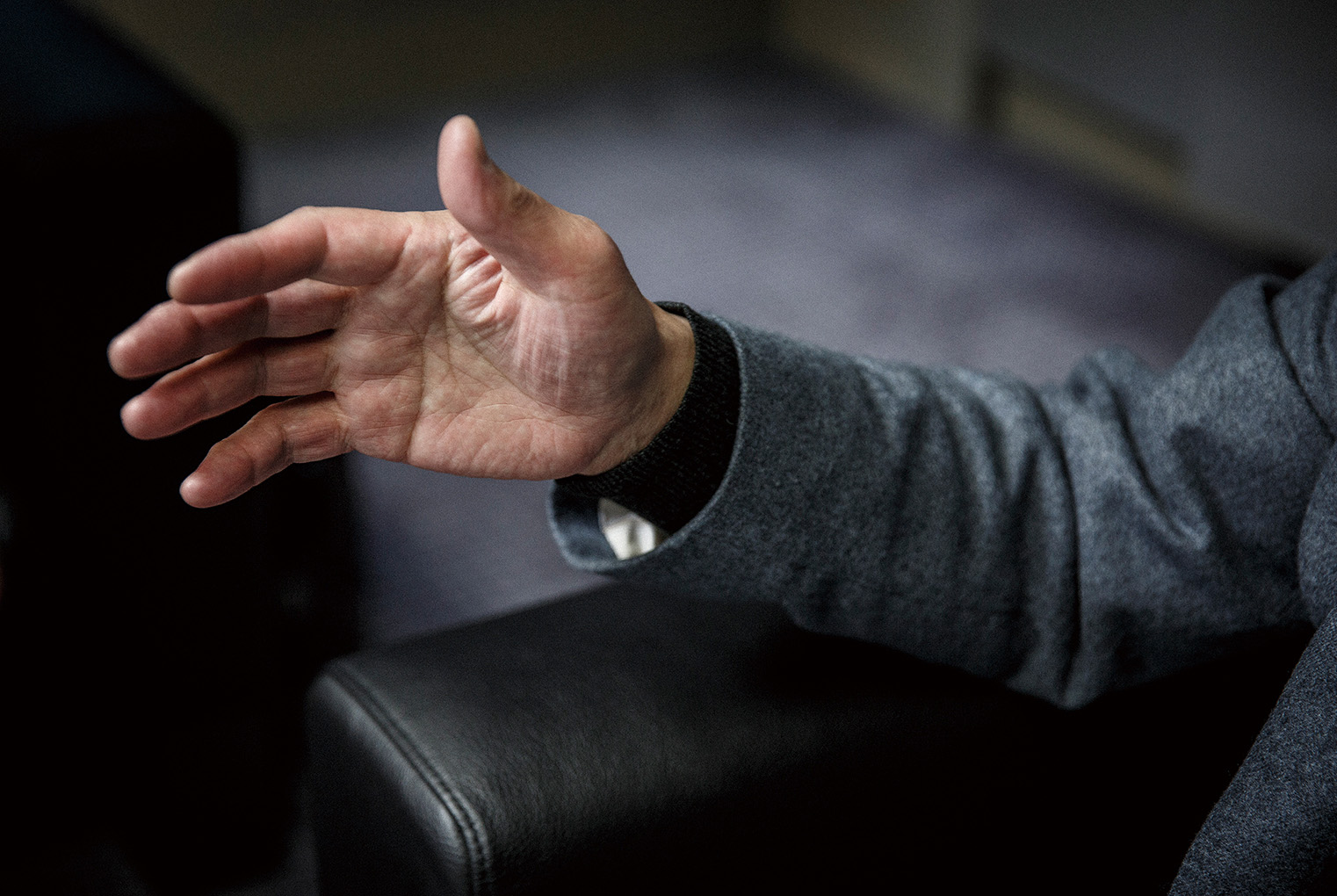
SHIGEMATSU
For a long time now in Japan, everyone's focus was overseas. I think it's good that our focus has returned to Japan. That being said, I currently teach at a university in the U.S. where there aren't any Japanese students at all.
TATENO
I heard about that.
SHIGEMATSU
Over half of the students at Ivy league schools are Asian. Of those, there may or may not be one Japanese student per year.
TATENO
So few...
SHIGEMATSU
The rest are mainly Chinese, Korean and Taiwanese. Even if it's okay now, I think that in 20 or 30 years, a huge and decisive gap will most definitely appear. Rather than thinking about if things are better abroad or in Japan, I think it's important be open to the option of studying and living abroad. We can’t be globally competitive if we fall into homogeneity.
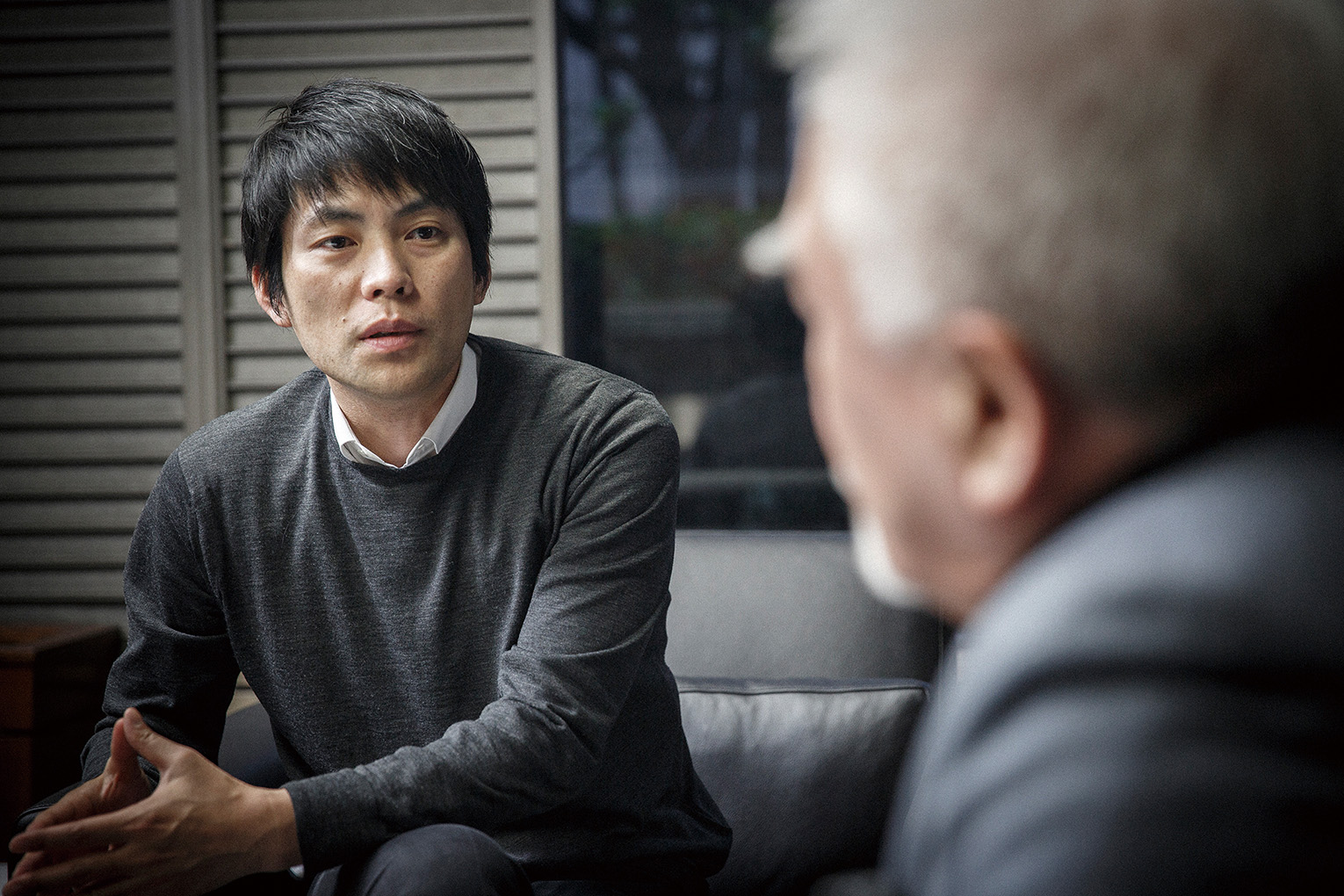
TATENO
I went to New York for the first time 40 years ago.
SHIGEMATSU
Why?
TATENO
To do business.
SHIGEMATSU
I see.
TATENO
I brought our merchandise with me to sell there. People at one architectural firm told me our products were as beautiful as jewelry, so I said "Please buy them!" but was told they were too expensive! *Laughs.* I went to many places, not just the U.S., I went all over Europe too. And it was clear that although many of our products were beautifully crafted, at that time they didn't match modern buildings at all. They sort of looked tacky, or tacked on. What do you think?
SHIGEMATSU
When money gets tight, architects can’t think about details like that. Things like design deadlines, speed, and the overall flow of a project can be overwhelming, so often there isn't enough time for the decorative aspects of a building. I think that this has to be changed. Architects used to have many opportunities to do interior design, but 21st century architects have very few chances to do interiors for commercial spaces.
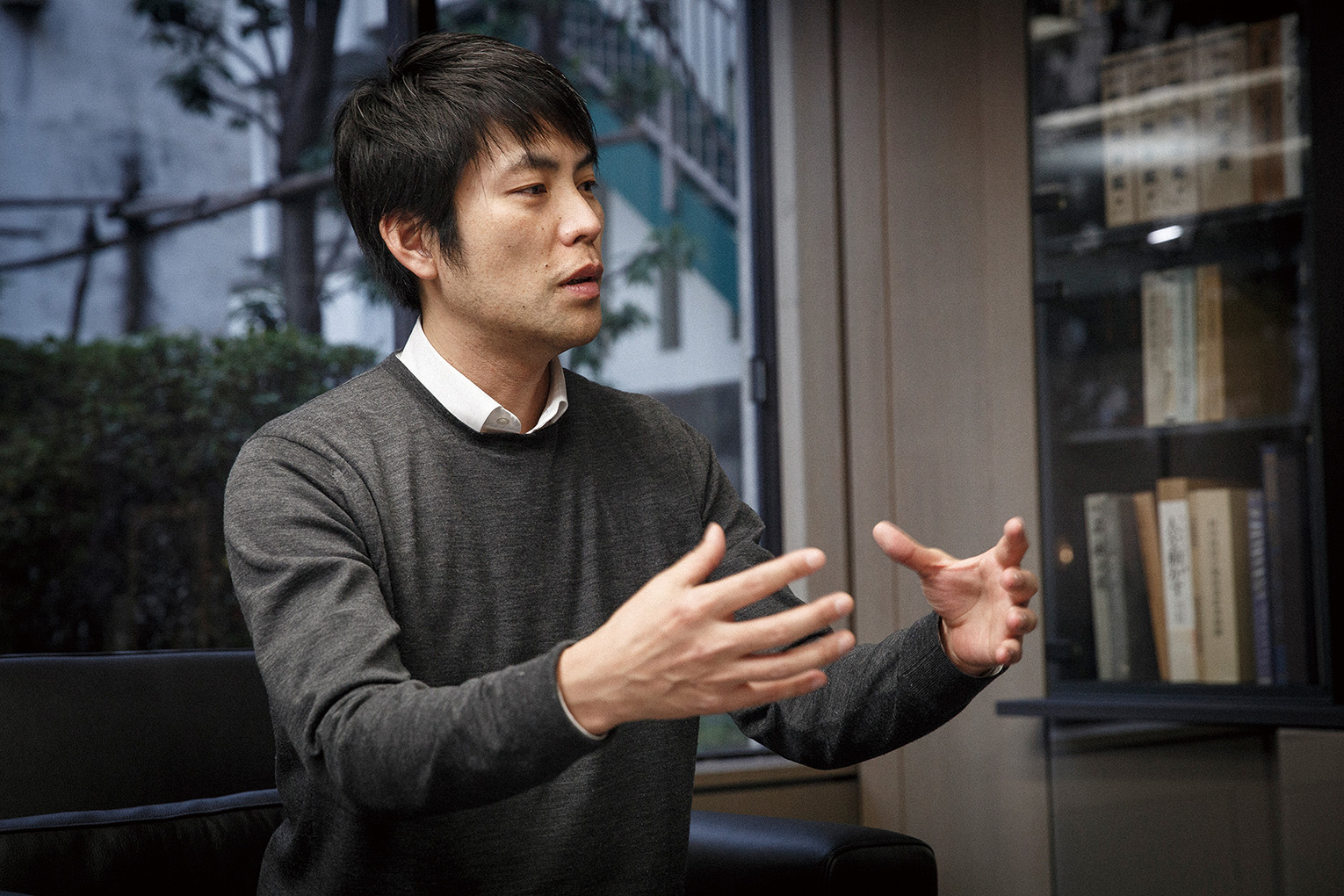
TATENO
That’s too bad.
SHIGEMATSU
I guess it shows the degree to which architecture and interior design have become separate spheres of expertise...
TATENO
Yeah, when I first started working, architects were extremely meticulous about even the smallest details of the buildings they designed. They helped clients choose furniture. Now most architects only do exteriors and don't want to have anything to do with the interior.
SHIGEMATSU
Maybe the architects have some responsibility in that respect, but I think financial pressure doesn’t allow architects the time to do those things. They probably wouldn't be allowed to even if they wanted to. Deadlines are so short that there isn't even enough time to design. So, for the client, it ends up being more efficient to hire an experienced interior designer.
TATENO
That makes sense.
SHIGEMATSU
Still, I think the situation in Japan is better than other places. The division of labor has progressed much more overseas. As architecture becomes overwhelmingly commercial, the goals behind building design are changing. I think in the past many public buildings were built with an architect overseeing the whole process, from beginning to end. Now commercial building projects are much more common.
TATENO
I was hoping to see buildings in Tokyo and Osaka designed by people aspiring to be the next generation of renowned architects. Buildings that architecture lovers from around the world would flock to come see. But most of what's there are just boring normal buildings; they don't really have character. How to you feel about the state of architecture in these cities?
SHIGEMATSU
Looking at it in a very positive light, you could say Japan has many neutral buildings. I think it is partly due to the culture of risk avoidance, and also a dislike of things that are different or unique.
TATENO
I agree. But in the past Japan was so full of unique designs...
SHIGEMATSU
That’s right! Until the 80s and 90s there were lots. In Osaka there was Shin Takamatsu, and leading the pack was the Takayaka architectural firm. Though there usually wasn't anything too crazy. By the way, after this I'm going to be giving a lecture, and I was planning to talk about how creative expression drops during times of extended economic stagnation. One example is Mujirushi. It's branded abroad as representing Japanese design, but It only sells colorless plain white products that present an extremely one-dimensional perspective on Japanese culture. I think it’s a great shame that it become accepted abroad as the representation of the Japanese aesthetic.
TATENO
I feel the same way about UNIQLO.
SHIGEMATSU
Yes.
TATENO
I think buildings should be built to leave impressions in our minds. Of course, building for commercial or economic purposes is fine, but decades from now those buildings will remain in the heart of the city, and they need to compliment the new buildings that will go up around them. I think we need to design with this in mind.
SHIGEMATSU
I think that there aren't many clients who would request such buildings. Mainly because most clients are prohibitively restricted by economic factors.
TATENO
Of course, a budget needs to be drawn up. The challenge is creating something special within the confines of a budget. I don't need to do the entire building. For example, just the lighting or the lobby. As you said, paying special attention to one area through the division of labor, may be the only economically feasible way. Recently, I have been telling architects they should hire craftsmen to do specialized work. If they don't, those craftsmen and their craft may disappear. This is the biggest problem in Japan. I feel we will soon be in the same situation as the U.S., where there are no skilled craftsmen left.
SHIGEMATSU
I think there are parts of Japan that follow that system, but in general, the construction industry does not. Recently, the skill level of general contractors has also really dropped off.
TATENO
*Laughs.*
SHIGEMATSU
I hear that from industry people who work in Japan. It’s a very sad situation.
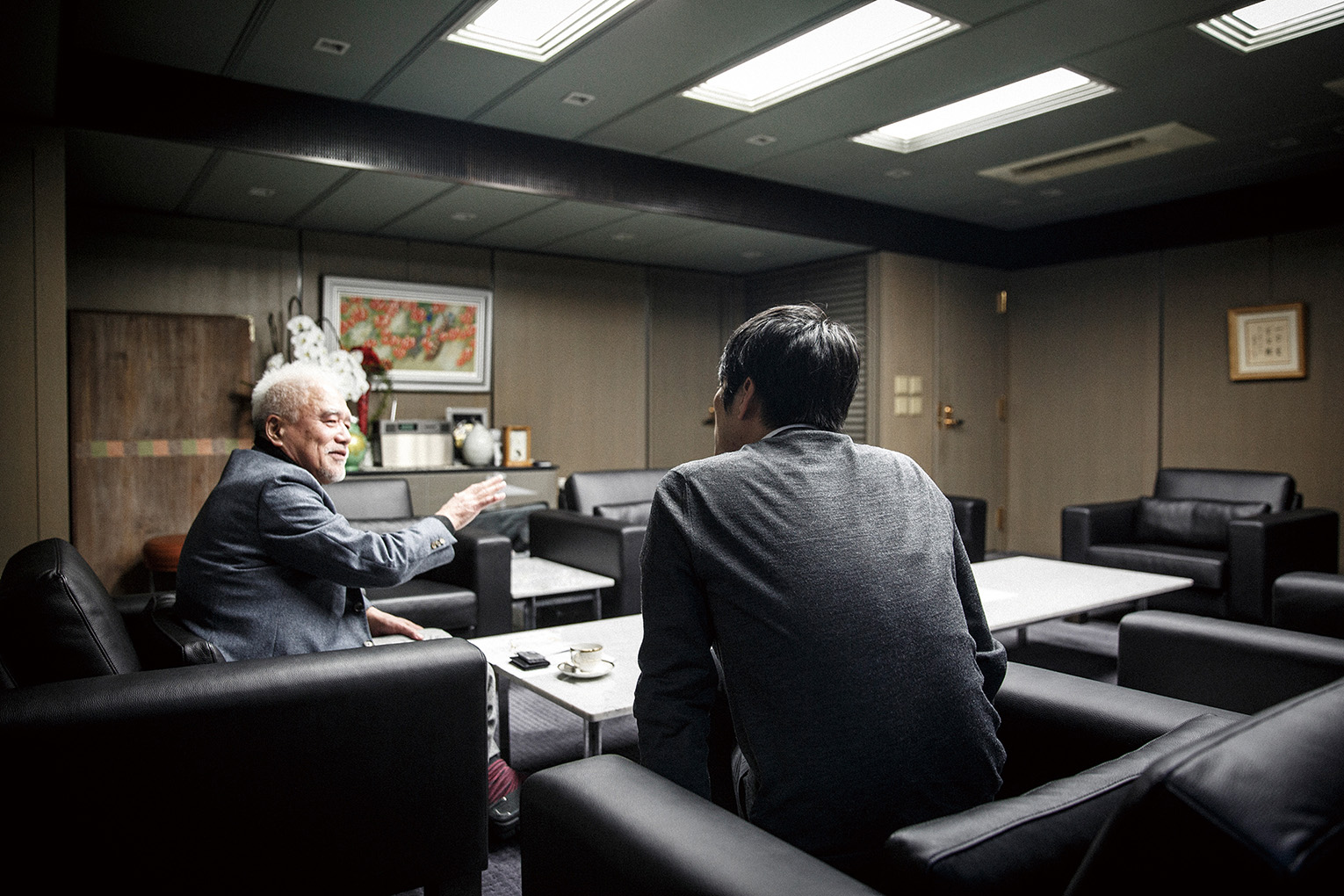
(Architect Kohki Hiranuma has joined the conversation as an interviewer)
HIRANUMA
Shigematsu-san, you've done many large-scale projects, but have you done anything on a residential scale?
SHIGEMATSU
I do houses as well as exhibitions, but I usually find myself strangely drawn towards influential urban projects. Most of those are on a larger scale. I take a different aesthetic approach when I work on smaller spaces.
HIRANUMA
The project you did in Omotesando, for instance.
SHIGEMATSU
Ah, COACH!?
TATENO
Right, COACH.
HIRANUMA
You made such a deep impression in such a tight space by creating something that was small yet had volume. I thought maybe you instinctually prefer to work on a more human-size scale. Is there a philosophy or a technique you use in these situations?
SHIGEMATSU
Yeah, I really want to work on that scale, but until now, I haven't really had the opportunity. But I have maintained a very long relationship with the fashion industry.
TATENO
Really?
SHIGEMATSU
Yes, I was working for Prada when I got the opportunity from COACH. It was a challenge that pushed me to explore design on a smaller scale, both physically and commercially. Because COACH used to be a... leathermaker?
Both
*Laughs.
TATENO
If you had to call it something. *Laughs.*
SHIGEMATSU
At first, they did only wallets. But now they have more than 2000 items in one collection!
TATENO
2000!? Wow.
SHIGEMATSU
That's how dramatically they grew. As a result of this rapid growth, their displays and logos were all mixed up. Every time we did anything, we had to organize all their merchandise before we could get started on branding. At the time, their displays were these cramped wooden shelves. I suggested surrounding and interlacing the entire space with shelves, like a library born from the need to be easily organized. When I looked at the collaborations bridging architecture and fashion in Omotesando and Aoyama, I found there was a disconnect between the interiors and exteriors. Architects did the facades, but the spaces inside were all done by interior designers, or used a brand's bespoke displays. Only Prada had me do both an interior and exterior.
TATENO
Interesting.
SHIGEMATSU
So, even though shelves are usually an interior element. I had the idea of removing the facade and instead extending the interior to the outside. Conceptually, the idea was to incorporate the act of shopping into the aesthetics of the facade.
TATENO
That's really interesting.
SHIGEMATSU
In the fashion business they change and adjust the displays every day. I wanted to create a space where you see the process happening and the people doing it, one that created a means of direct communication. That was my image for the design.
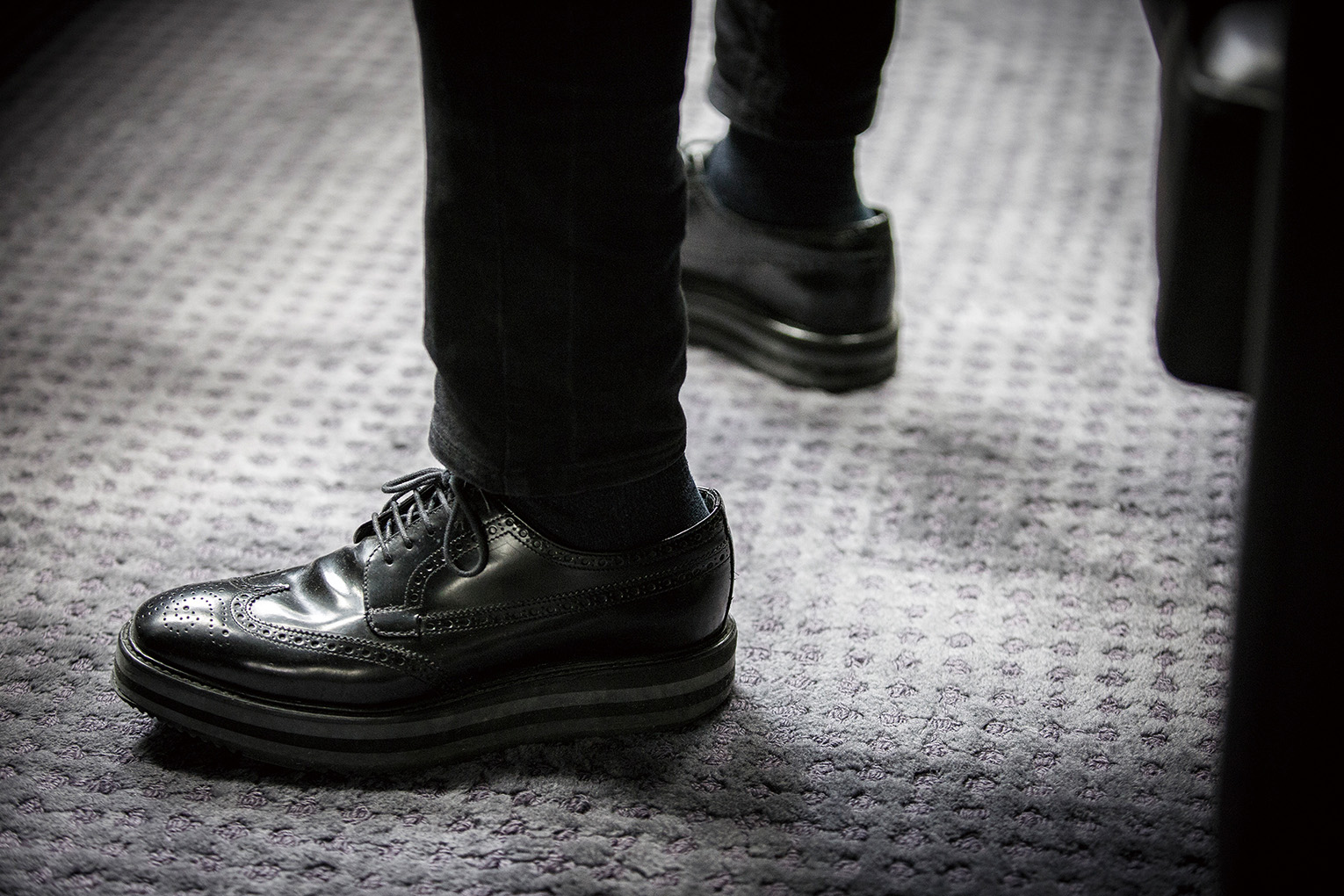
HIRANUMA
Tateno-san was saying that as contemporary architecture grows in scale, details are increasingly neglected.
SHIGEMATSU
Yes.
HIRANUMA
A while back, Modric made some beautiful pieces of hardware. They were so detailed!
SHIGEMATSU
Yeah.
HIRANUMA
UNION makes some similar high-quality handles and fittings.
TATENO
We do.
HIRANUMA
When you look at and hold a beautifully constructed handle, the details really come out.
SHIGEMATSU
They really do.
HIRANUMA
If you were going to order some exceptionally high-quality metal fixtures from Tateno-san here, what do you suppose you would want to work with?
TATENO
*Laughs.*
SHIGEMATSU
Hmm...
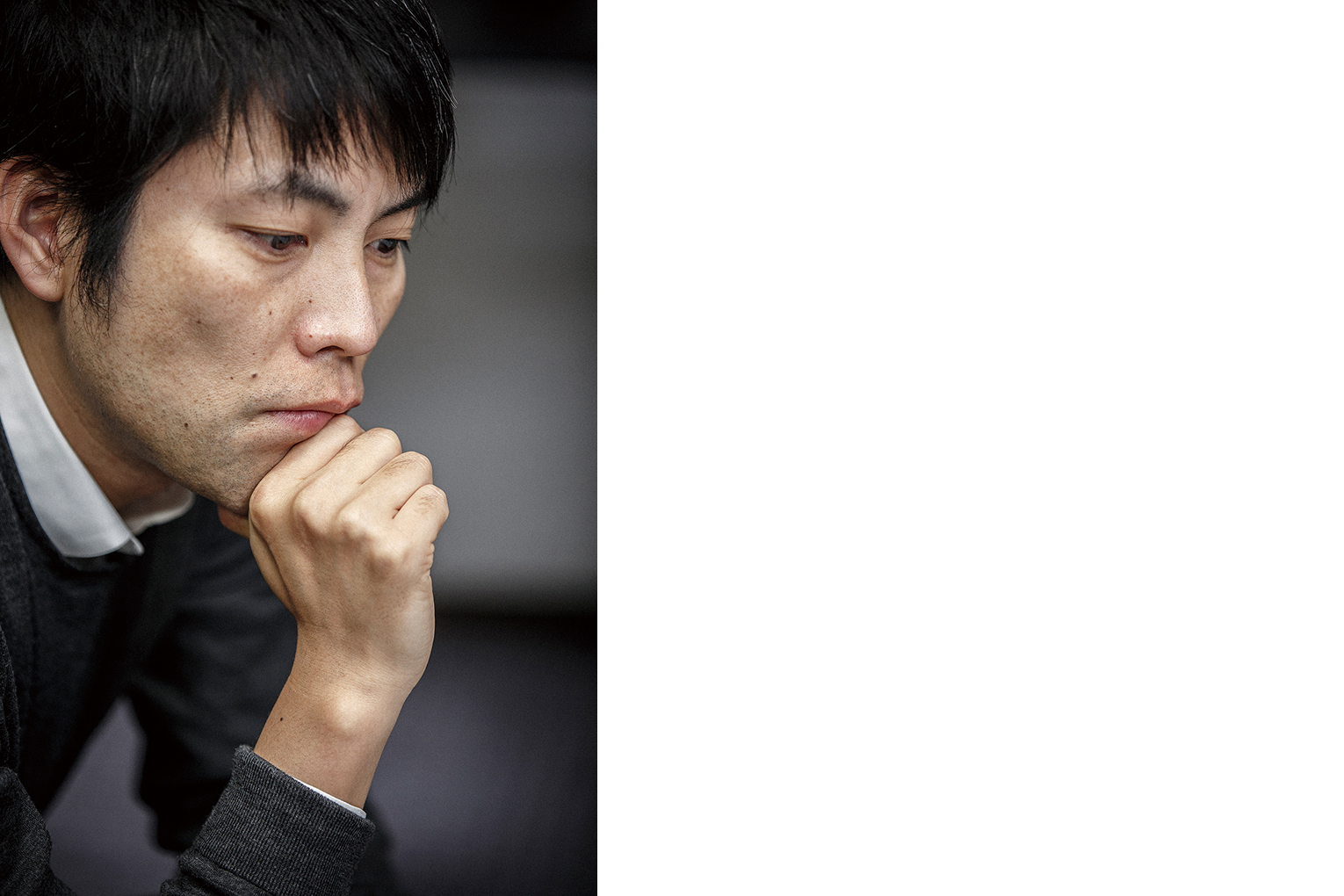
HIRANUMA
For example, something subtle?
SHIGEMATSU
Yes.
TATENO
Of course, something that doesn't stand out too much.
HIRANUMA
Or, should handles and fittings wear their functional beauty on their surfaces?
SHIGEMATSU
It’s a slightly difficult question, but I think both can work. Recently, products incorporating home electronics have become popular. Things like telephones that let you operate an appliance remotely. I'm not saying it's necessarily ideal, but I think it's difficult to evolve in this day and age with beauty, texture and design alone. I think it needs to be approached from both sides. There is no choice but to look at new possibilities from many angles.
TATENO
As new technologies enter our lives, we also need new designs.
SHIGEMATSU
Large evolutionary changes in architecture or design always follow technological advancements. Maybe this will come across as anti-craftsmanship, but with a 3D printer and the necessary information, you can make anything, from simple lines to extremely complex shapes, at the press of a button. As this technology moves forward, there won't be any technical difference between creating something complex or simple. So this may make possible door handles, that until now, could only be made by expert craftsmen because of their extreme complexity. But it isn't yet possible to rely on 3D printers; the technology still requires human hands to complete complex tasks. I think getting a young and diverse group of people to try designing things around this technology could uncover some of its possibilities. Also, by having them look at the roles doors play, and how their function may change... though I'm not too sure about that. *Laughs.* I wouldn't know until I tried, but I would love to give it a go.
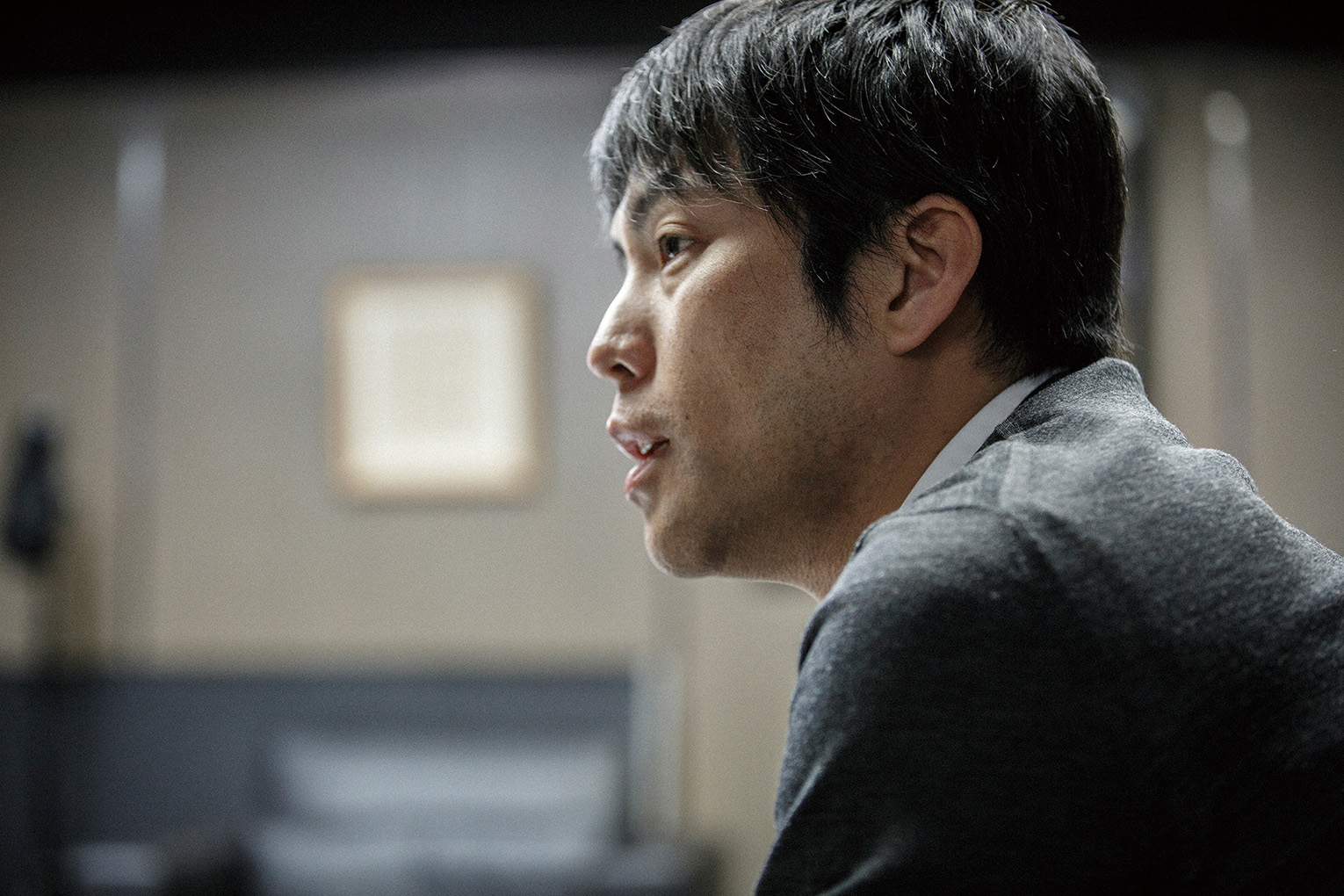
TATENO
I see.
SHIGEMATSU
I'd participate if asked.
TATENO
We definitely would like to get you on board. There is a relationship between design and technology, but I'm also interested in the relationship between materials and technology. Historically speaking, the rapid evolution of materials changed the demands on design and finishing. For example, until stainless steel was invented, the only options were brass and aluminum.
SHIGEMATSU
Yes.
TATENO
Then came stainless steel.
SHIGEMATSU
Yeah.
TATENO
After that, carbon.
SHIGEMATSU
Carbon. That makes sense.
TATENO
Then, titanium.
SHIGEMATSU
Ok.
TATENO
And since then, there's been nothing!
SHIGEMATSU
True.
TATENO
After aluminum became standard, new finishing techniques were developed. For example, shot-blasted aluminum.
SHIGEMATSU
Right.
TATENO
The same with stainless steel and anodizing.
SHIGEMATSU
Sure.
TATENO
Those were all incremental changes, but they didn't really change very much.
SHIGEMATSU
Yeah.
TATENO
Is it the same with architecture?
SHIGEMATSU
Yes, it's exactly the same. The essentials remain unchanged. There are new innovations in design, but the fundamentals are the same.
TATENO
As you said, we need to re-examine the essential qualities of our door handles. And, little by little, to try to incorporate new ideas and trends. As you mentioned, things like texture, 3D printing, and technological advances are important.
SHIGEMATSU
Yes, those are all important but expensive.
TATENO
*Laughs.*
SHIGEMATSU
It's a little sad. While there are still lots of people out there focusing on the details of craftsmanship, I'm afraid I've started to consider that something of a luxury.
TATENO
Soon it will be UNION’s 60th anniversary.
SHIGEMATSU
Congratulations!
TATENO
Actually, I’m thinking about exhibiting at the Milan Furniture Fair again. Last time was about 10 years ago. I decided I wanted to exhibit there again for our 60th year. I want to display something that will make the world gasp.
SHIGEMATSU
Right.
TATENO
Why don't you work with us? *Laughs.*
SHIGEMATSU
I couldn't possibly! *Laughs.* Milan, huh.
TATENO
Last time we asked Taira Nishizawa to do it.
SHIGEMATSU
Really?
TATENO
He organized the exhibition. All of it.
SHIGEMATSU
Did you exhibit handles too?
TATENO
I didn't at that time.
SHIGEMATSU
Only the exhibition?
TATENO
We just arranged an exhibit in a small church that I rented.
SHIGEMATSU
Ok.
TATENO
We blew so much money on that!
Both
*Biggest laugh so far*
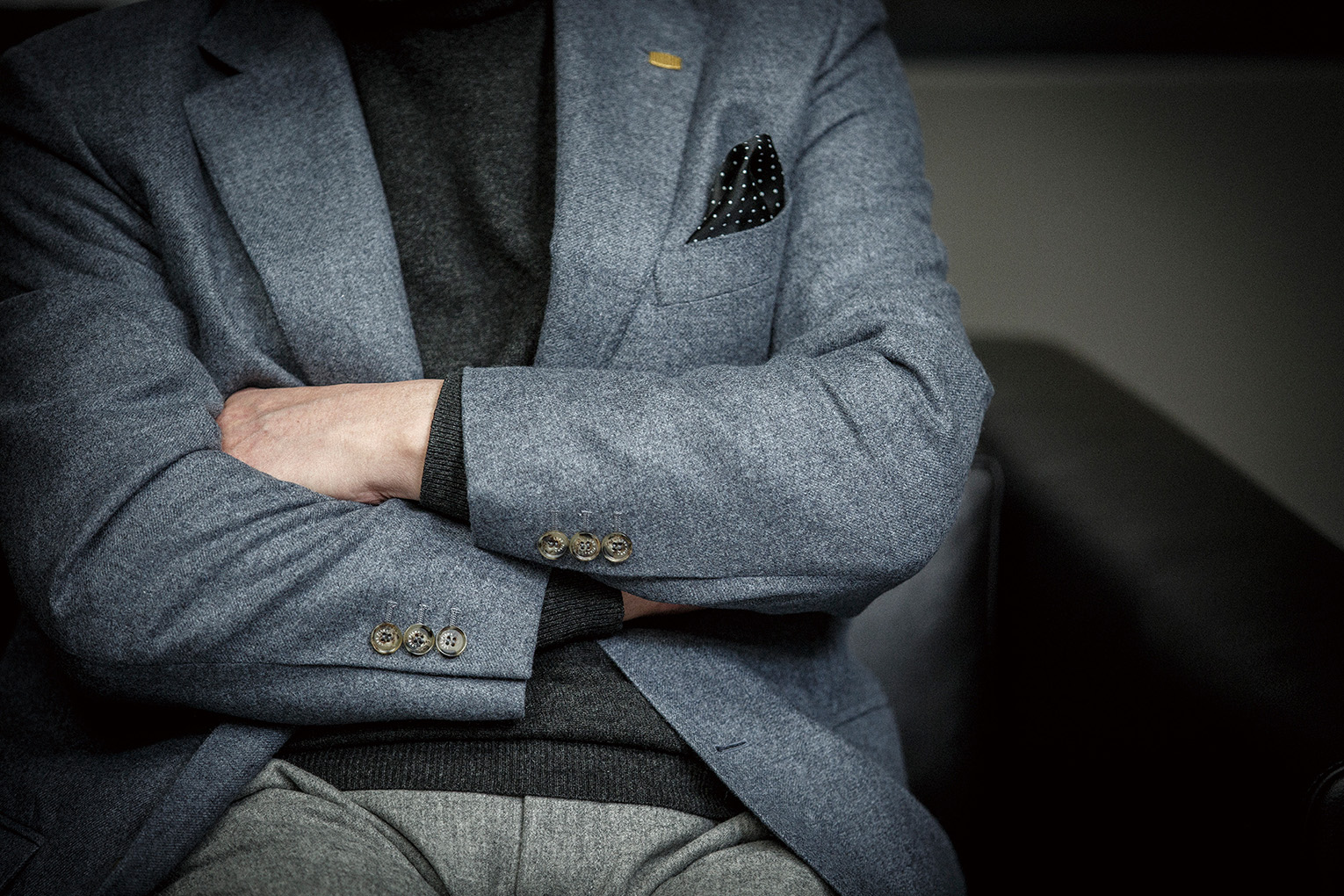
TATENO
I guess it was only Toyota and us that got great reviews.
SHIGEMATSU
Wow, you mean the Toyota Lexus display!?
TATENO
Yes, that’s right! That was the first time Lexus presented.
SHIGEMATSU
Was it the one that Junya Ishigami did for them?
HIRANUMA
Before that.
SHIGEMATSU
Before? Really?
HIRANUMA
Yes.
TATENO
Our exhibition got rave reviews. I told people that they could use all our products right away just as-is.
SHIGEMATSU
*Laughs.*
TATENO
I want to exhibit something people will use at least once.
SHIGEMATSU
Right.
TATENO
I was thinking I wanted to create something functional that can be used as it is, locally or in Europe.
SHIGEMATSU
Really?
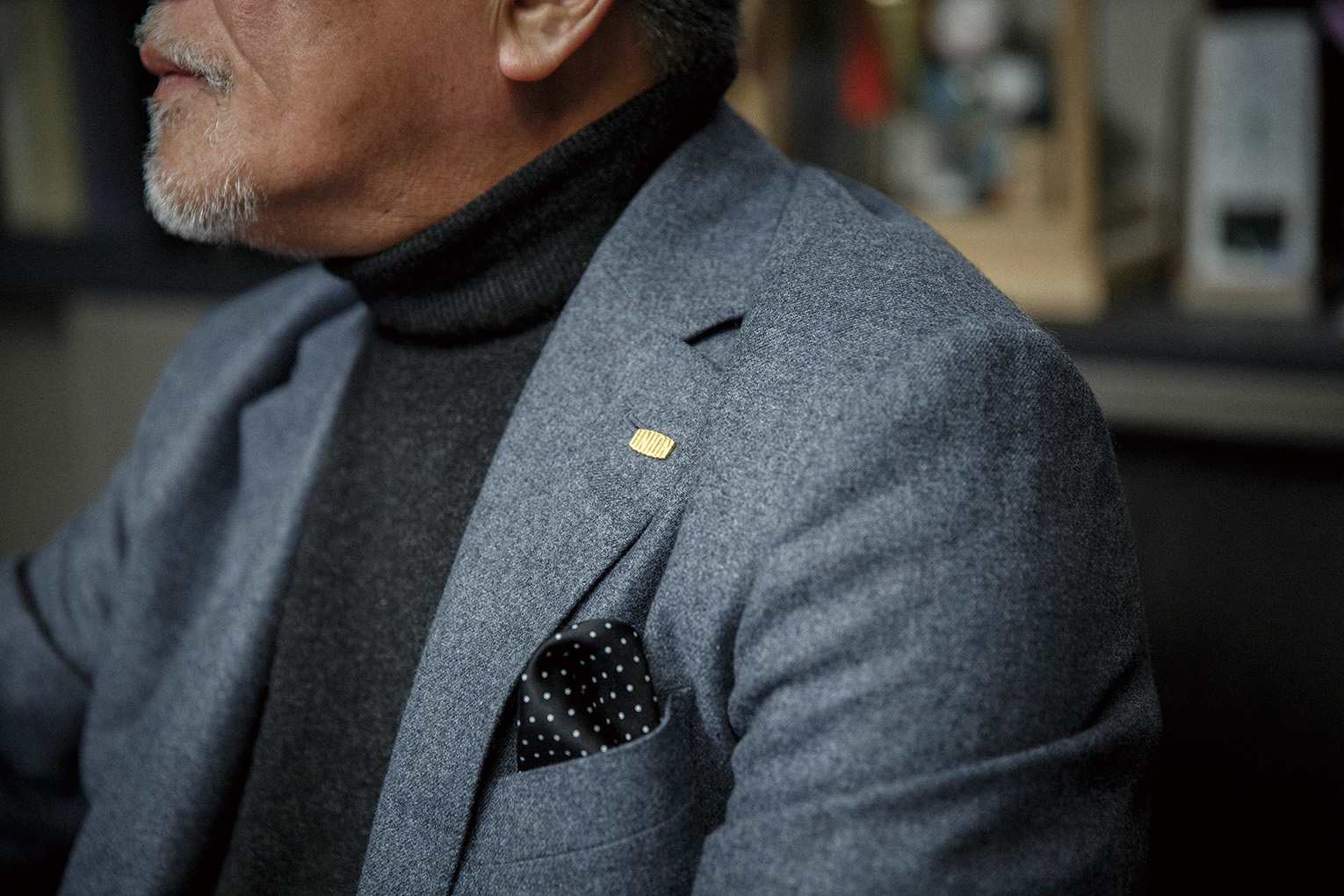
HIRANUMA
Tateno-san, you're 70 now, but you've said that in your younger days you were mentored by architects in Osaka and Tokyo.
TATENO
Yes.
HIRANUMA
We are creating a new line of products branded with your name, JUNZO. We want to make a big impression in the world of architecture. Right now, we are conducting market research on designers to see what they think.
SHIGEMATSU
I see.
HIRANUMA
In the past, when someone said "Junzo," Yoshimura would come to mind.
SHIGEMATSU
Yeah, Junzo Yoshimura.
HIRANUMA
Isn't there another Junzo who designed houses?
SHIGEMATSU
Itakura?
HIRANUMA
That’s right. Junzo Itakura. In those days, architects designed everything from beginning to end. To the point that the people who were going to live in them almost had no say in anything. Even the positioning of furniture was all decided for them.
SHIGEMATSU
Hmm.
HIRANUMA
But times have changed.
SHIGEMATSU
Yes.
HIRANUMA
We don't know how things will evolve from here.
SHIGEMATSU
That’s true.
HIRANUMA
With the houses you’re making, how much... or, how do you, suggest...or teach the clients about that kind of thing?
SHIGEMATSU
Recently, I completed a house in Manilla for a very rich person. I had little flexibility in my work, as everything was completely decided. Even though I had little autonomy in my work, the space itself was very complex and it had an experimental feel. For example, LA has been undergoing a housing movement. During times like this, as with Bauhaus as well, it’s not only about architecture; a variety of people from various specialties work together. Change won't come from architecture alone. Collaborating with different people from various industries is much more powerful... Today in Japan, people pay lots of money to live in joyless buildings. We need to change this by working together.
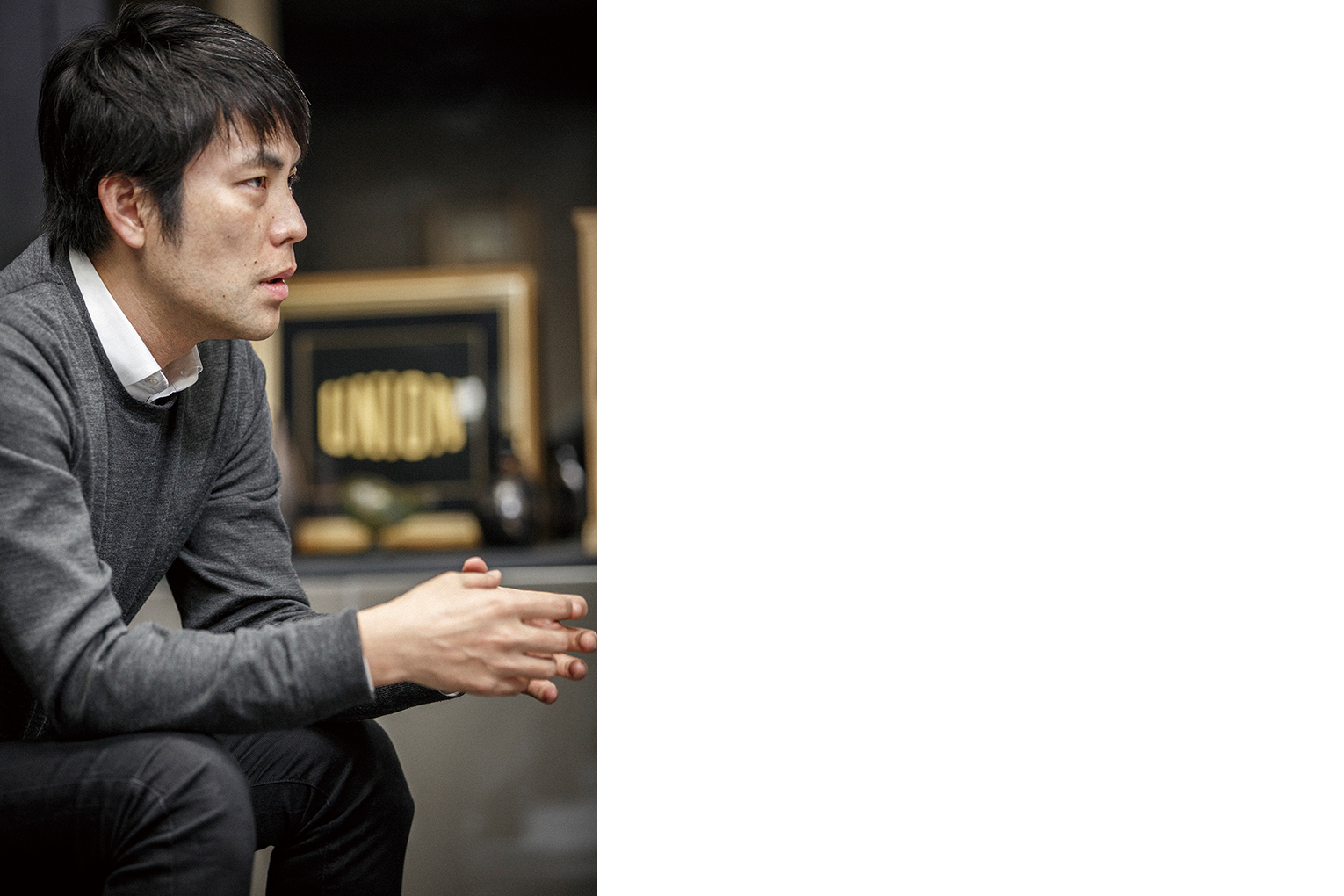
TATENO
We have to. Absolutely.
SHIGEMATSU
When you have many creative minds working together, people experiment more, and new ideas are born. Then design itself carries meaning. That sort of environment is ideal.
TATENO
That makes sense. Without the freedom to explore, new ideas won't emerge. And good things don't come from obsessively adhering to a budget.
SHIGEMATSU
But I think there is a social demand for experimental housing to serve as case studies, even if done at low cost without much of a budget. The declining birthrate in Japan is creating a surplus of land, and many decrepit houses can’t be rebuilt. In this situation we need to consider our possibilities. I think that there are some extremely beautiful details within the current state of things. By details, I mean things like arts and crafts, and rural city ideas, don't they all exist within the framework of a larger concept? Modernism was the same way... I'm interested in what new designs can be born from those details. As you mentioned before, after metal, what comes next? The other day, I participated in a conference with the head of MIT's Media-lab, Minoru Ito. He is always saying that biology and medicine are now becoming creative industries. When it gets to that stage there will be a huge leap in the evolutionary curve. For example, the telephone became like this [iPhone] in 20 years. With nanotechnology and biotechnology, materials themselves will change dramatically. Even door handles may go from metal to some kind of bio-derivative.
TATENO
Well, if it comes to that, I guess door handles themselves could disappear.
SHIGEMATSU
You're right.
TATENO
*Laughs.*
SHIGEMATSU
The concept of doors and handles as separate items may be changing, too.
TATENO
*Laughs.* Yeah, it might.
HIRANUMA
Let’s talk about that in a little more depth... It's very interesting. I guess doors are like the shield of a building, but a shield that you can open and close. I think the ideas around this will change rapidly.
SHIGEMATSU
I think there will be things that change and others that don't. I don't think the fundamental idea of a house will change, but things like cars and trains will evolve really quickly. Especially, I think, cars. Now you don't even need a key to open a car door.
TATENO
That’s right.
SHIGEMATSU
In that way things will change, but I don't think that houses will change that much on a fundamental level.
TATENO
I don’t think there will be such a sudden change, but in the future, I think there will be a point where doors are no longer used. It could happen within several decades.
SHIGEMATSU
No doors...will things change that much?
Both
*Laughs.*
HIRANUMA
Look at Junya Ishikami and Sou Fujimoto's KAIT (Kanagawa Institute of Technology) layout. They just used posts, one after another, to create a sense of separate spaces. I worry about the future of UNION if doors begin to steadily disappear from buildings.
Both
*Laughs.*
TATENO
But, *laughing,* that won't happen in our lifetime. That's the future. Honestly, at one point I was thinking of doing automatic doors. Ones that would open much faster than anything now. They would glide open instantly using a sensor.
SHIGEMATSU
I see.
TATENO
But we can’t make them yet.
SHIGEMATSU
True.
TATENO
You have to pause to allow an automatic door to open; that just doesn't suit Japanese people. That’s why we still have doors with handles. They allow everybody to open doors at the speed they want. If automatic doors opened instantaneously, then the door handle would probably be relegated to antiquity. Japanese people are quite impatient.
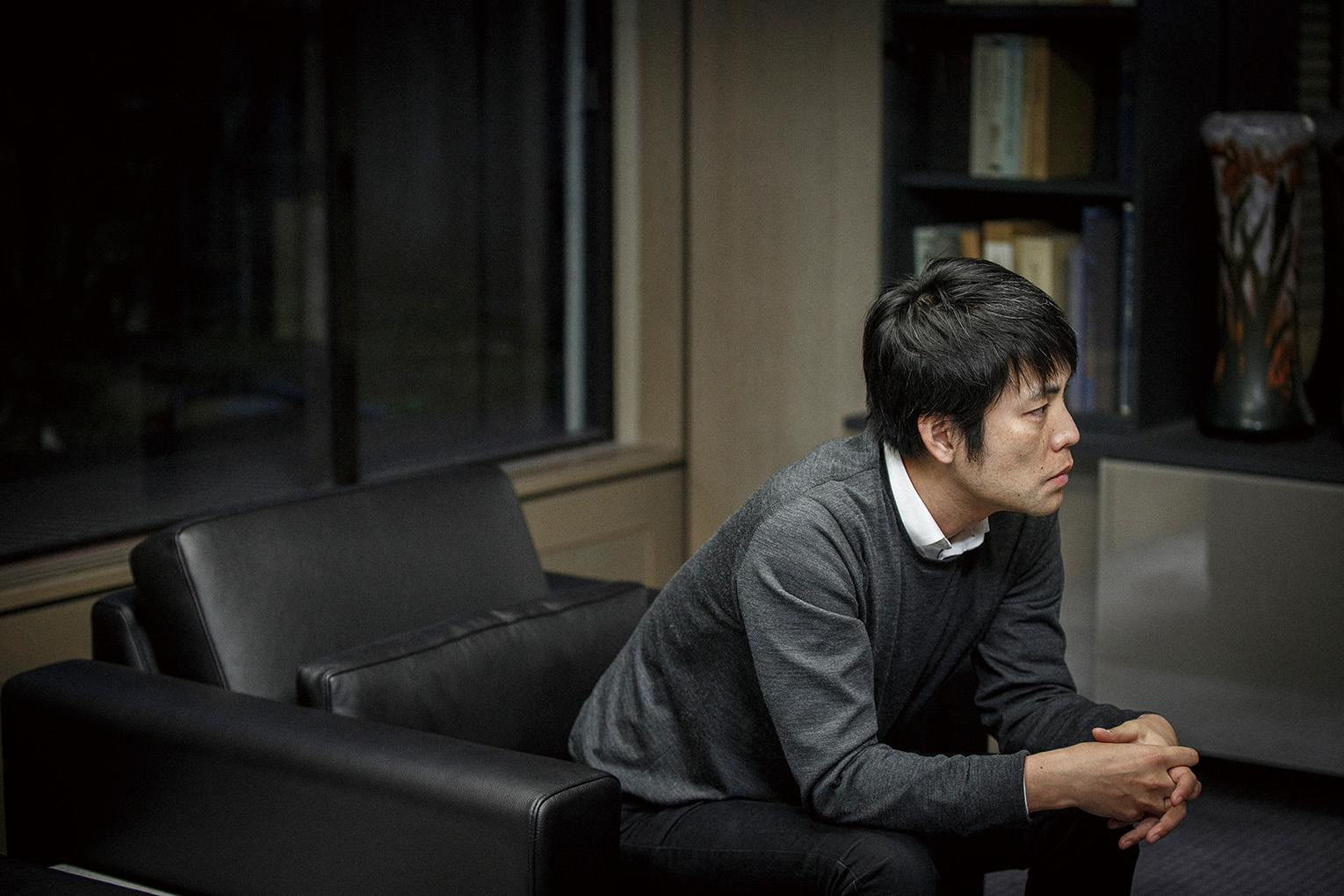
SHIGEMATSU
You’re right.
TATENO
They still don't open fast enough.
SHIGEMATSU
Yeah.
TATENO
You've got to stop and wait for a little bit.
SHIGEMATSU
Right.
TATENO
If they could open doors at the speed we enter rooms, demand for our handles would weaken... Well, I guess they would still be used on doors on upper level floors.
SHIGEMATSU
Hmm.
TATENO
It worries me a little.
SHIGEMATSU
In a way, from a very simple perspective, doors always create dead space.
TATENO
They do.
SHIGEMATSU
Things really haven't evolved much in that respect. Even sliding doors create dead space, as they need somewhere to slide into. There must be a way to make a door that doesn't create dead space, or a way to reduce the visio-spatial difference between open and closed doors. Some designers actually prefer open doors. How can you design around the difference between doors in an open and closed state? We can also consider the functions a door can have. I often use doors to hang coats, or to put mirrors on. There are a lot of possibilities with doors. The doors themselves can have many functions. I mean, not like a James Bond gadget. *Laughs.* But we can make secret doors. And we can accept that dead space is necessary, and open up possibilities for functions that space can have. We can bring dead space to life.
TATENO
That makes sense. I think that's especially true for Japanese architects, when it comes to minimizing dead space. It isn’t so much so abroad, where dead space isn't as important.
SHIGEMATSU
I wonder if there are any companies researching or developing that idea in collaboration with door manufacturers...
TATENO
They are quite far removed, actually.
SHIGEMATSU
Is that so?
TATENO
We release new handle designs every year, but door companies do doors. There isn't any collaboration in that area. Though we have worked together with lock manufacturers. I think locksmiths are suffering from a very deep sense of crisis.
SHIGEMATSU
For me, what I dislike the most about doing public buildings, though not necessarily only public buildings, is emergency exit doors. They have to be push-to-open, and instead of a nice door handle they always have some gargantuan industrial bar. I'm sure architects have some ideas for aesthetically pleasing ways to handle emergency exits, but I think it's a law or something. There is always this sort of compulsory ideal.
TATENO
*Laughs.*
SHIGEMATSU
Don't you ever wonder how long this game of cat and mouse will go on for? Why can't architects develop the details, or the system themselves? Why can't architects make the law? I sometimes wonder if this could somehow be made possible by talking to door manufacturers or government officials.
TATENO
Well actually, the construction bureaucracy in Japan isn't that powerful. I'm sure you could get the freedom to do it your way.
SHIGEMATSU
Really?
TATENO
Sure, no problem!
SHIGEMATSU
That’s great!
TATENO
*Laughs.*
SHIGEMATSU
Of course, I'm not saying that having to have emergency exits is a bad thing, but architects most definitely hate not having any say on their design. I often feel this way, too, but there’s no choice; they must be installed in a certain way. And the bureaucrats never try to meet us half-way at all. I'm going to try and change that.
TATENO
I see.
SHIGEMATSU
So...
TATENO
Sometimes, they let us use our own lever door handles instead of the standard bar handles outside of Japan. Actually, quite a lot. But definitely in the U.S. and Europe, and now to a certain degree in East Asia, emergency doors must have the bar type panic handle on them.
SHIGEMATSU
That’s true. In foyers you must have at least two. I really don't like the ventilation, and I hate revolving doors as well. If I have the time, I want to think up a better system. I think there are so many things that could be improved through better design.
TATENO
Ok. Let’s discuss that in more depth later.
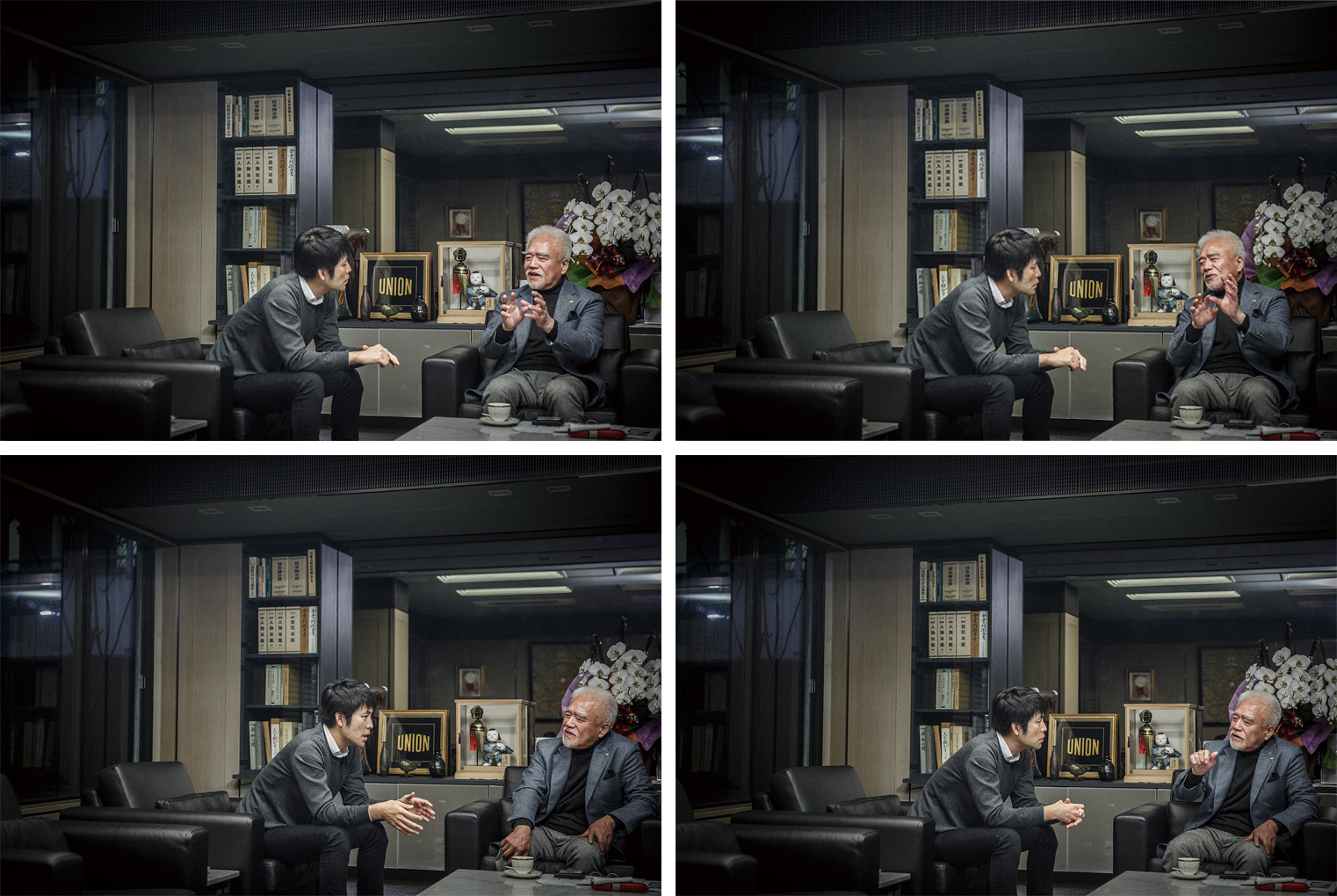
SHIGEMATSU
Not in regard to the Milan exhibit, but we recently held the Rem Koolhaas Elements of Architecture exhibition in Venice. It focused on the evolution of individual architectural components. For example, wall systems, ceiling systems, flooring systems...even toilets. But unfortunately, door handles weren't part of it.
TATENO
Oh, really?
SHIGEMATSU
When you look at it in that way, it becomes unquestionably clear which areas have evolved and which have not. Not only door handles: I think looking at things from a birds' eye view helps us imagine and formulate questions about what the houses and the living environments of the future may be.
TATENO
Yes.
SHIGEMATSU
And also...Kenya Hara did that..what was it called?… HOUSE something...
HIRANUMA
HOUSE VISION!
SHIGEMATSU
That’s right, HOUSE VISION! I think that is also a good way to show the relationship between industry and design.
HIRANUMA
I saw the exhibition by Rem, it was really good. Ah, so that was what it was about! *Laughs.*
TATENO
It was good. But to be honest, handles haven't really changed. Designs and materials have changed, but the basic functions are still open and close, right? If you make them automatic, so they open in a different way, in that sense they change. But fundamentally they haven't changed a lot.
SHIGEMATSU
There was an idealistic, futurist way of thinking about automatic doors. It's an older way of thinking. Ultimately, even if doors are automatic, people need to be able to open them by hand in an emergency. I think because basic structures maintain a high level of reliability, no matter how far things evolve, we probably will never fully rely on automatic doors. There will always be a physical aspect.
TATENO
Yes, that's true.
(Everyone stands up and gathers in front of a wooden screen)
TATENO
My house in Ikoma is built in the Sukiya-style [house with a traditional tea room].
SHIGEMATSU
Really?
TATENO
It was carved by a carpenter using itto-bori techniques.
SHIGEMATSU
Wow, is that a door?
TATENO
It’s called “shoritsu.”
SHIGEMATSU
...“shoritsu ”
TATENO
It’s drying out and has warped a bit.
(Opens)
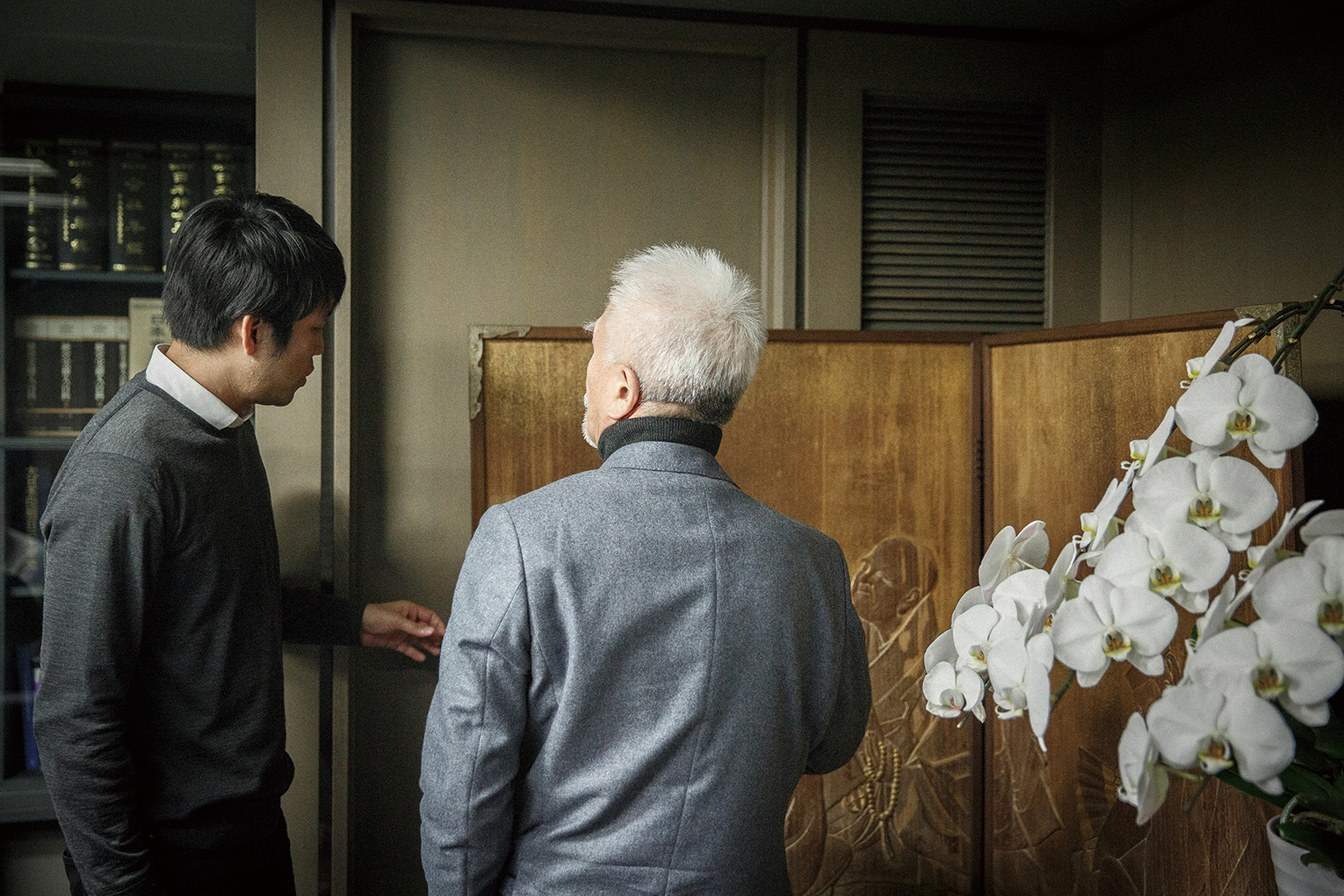
SHIGEMATSU
Oh, wow!!
TATENO
The carpenter carved this too. These two places are gold.
SHIGEMATSU
Wow. So will this carving technique soon be lost?
TATENO
There aren't any craftsmen left who specialize only in this technique.
SHIGEMATSU
…The mold-type object in the hallway, too?
TATENO
That's a cast. The cast is made out of rubber. It’s interesting, right!?
(They return to their seats)
TATENO
As we talked about before, craftsmen who specialize in wood are steadily disappearing. We can get casts made in aluminum and brass, and we also need them in wood, but there isn't anybody left who can carve them. Now, our young people are compiling 3D data and printing them out in resin. We plan to use them in place of wood. We started experimenting with this last year, using 3D printing to replicate traditional casting techniques. We are now able to fulfill orders on a very small scale of 10 items or so. Our plan is to be able to make bespoke items available online in the future.
SHIGEMATSU
I see. I think that's a very good plan. With 3D printing, as I mentioned earlier, the line between simple and complex designs, or ones that can be easily mass-produced and those that can’t, will slowly disappear. I think it's good to make a process that allows complex designs for general purpose use. Of course, I'm interested in seeing the designs it will create. We will be able to make anything with 3D printers, but I'm curious as to whether this will result in needlessly complex things. With computers, there is no limit to what we can design, and I wonder what we will come up with. Maybe it will be something that really feels comfortable to the human hand.

TATENO
In that regard, we have to question whether or not these designs will match a given building. I think our work will become even more complex, as we will be trying to find ways to match handle designs with buildings.
SHIGEMATSU
But I think that's a good thing! If I could make custom door handles for a building I was designing, for example, if there was little difference in cost versus a mass-produced product, then I'm sure I would use them. 3D printing is about erasing the difference between mass-production and bespoke designs.
TATENO
Like I said, we're just starting to have that: making models with a 3D printer. It's a cost-effective way of producing designs that combine traditional casting techniques and modern technology. Don't you think it will make a lot of architects happy? Until now, even if you wanted to have something custom made, it wasn't feasible because of the high cost.
SHIGEMATSU
That sounds great. I'd really love to see you collaborate with a door manufacturer. No matter how cool and profound your new door handles are, if they can only be used on the standard flimsy hollow doors, then the result will be diluted. Right now, the doors in Japan are becoming cheaper and cheaper.
TATENO
*Laughs.* You're right.
SHIGEMATSU
*Laughs.* It would be great if these ideas of yours spill over to the other design elements of architecture.
TATENO
Mhm.
HIRANUMA
At the moment, manufactures like Hunter Douglas or Silent Gliss, who produce products spanning across multiple design elements, don't really exist in Japan. It would be good to create something new and different with manufacturers like them.
TATENO
I would definitely like to go to New York again.
SHIGEMATSU
Ah, most definitely! We have offices in the same building, after all.
Both
*Laughs.*
TATENO
There are a lot of architects in that building. And there is an exhibition space on the 9th floor.
SHIGEMATSU
Is that right?
TATENO
By all means, take a look if you get the chance.
SHIGEMATSU
As soon as I get back! I'm just on the 13th floor.
TATENO
*Laughs.* Please do.
TATENO
You know, I run the UNION Foundation for Ergodesign Culture. We have architects think up a theme for a competition, and Japanese students and recent graduates can enter.
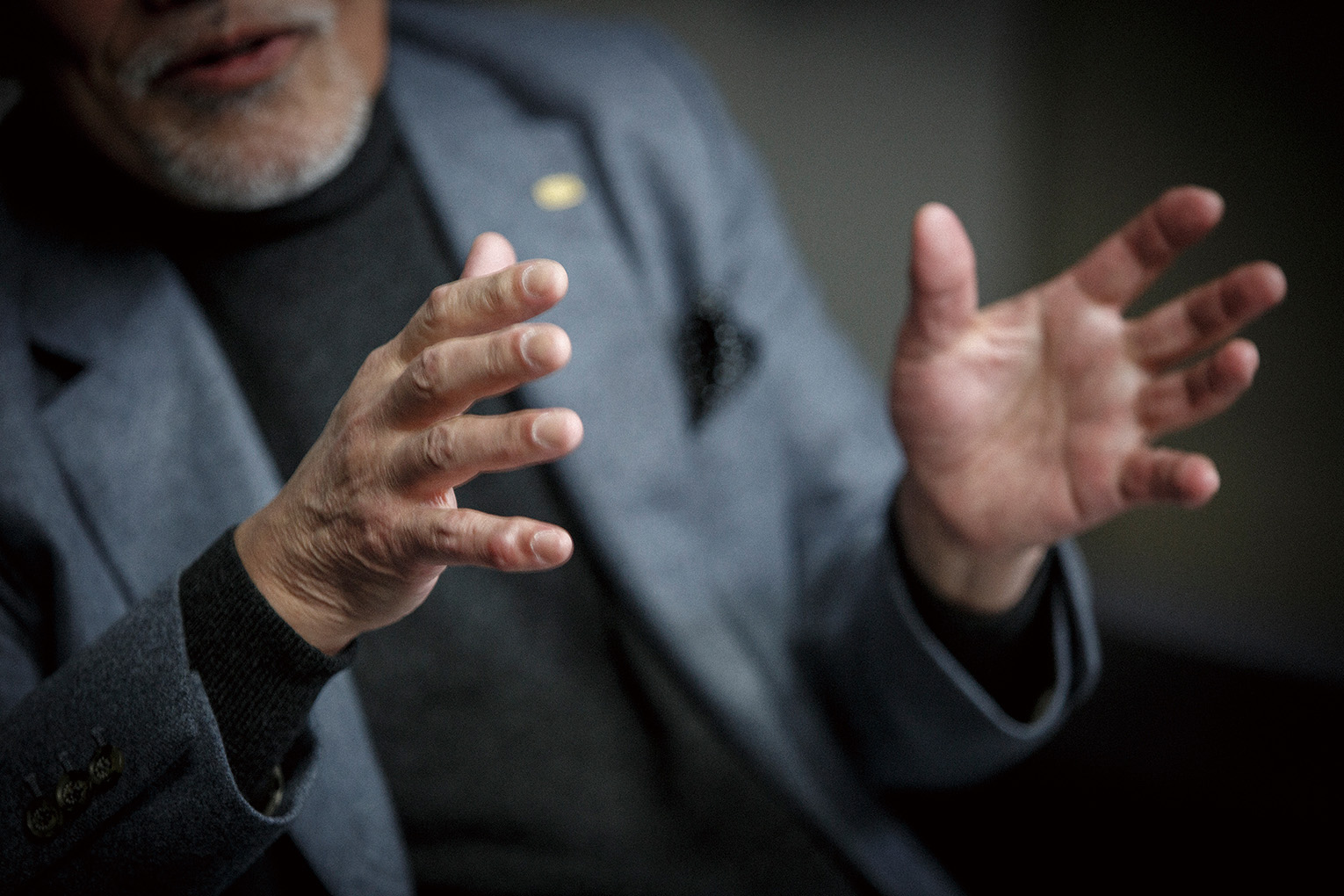
SHIGEMATSU
I see.
TATENO
Students enter their designs based on a given theme. Usually there are about 300 applicants. And from those we choose a winner.
SHIGEMATSU
Interesting.
TATENO
It's aimed at students who want to study abroad.
HIRANUMA
Students receive a research grant. Actually, I won one. *Laughs.*
SHIGEMATSU
Really? That makes sense.
HIRANUMA
*Laughs.*
TATENO
I think it's been going almost 22 years. There are quite a lot of winners who are now active in the architectural world. Some are working abroad. That's why I really want to see this program continue.
SHIGEMATSU
Yeah.
TATENO
I've been wondering if it would be possible to work together with a foreign university. Aren't you working as a professor at the moment?
SHIGEMATSU
Yes, I am.
TATENO
I would be interested in working with you in that respect... I'd want you to design a product for us. I think that kind of collaboration is something we would really like to do.
SHIGEMATSU
I see. I think there used to be many opportunities to study things like "Homes of the Future" at universities, but now the money for R&D like that all goes to public foundations, think tanks, and businesses.
HIRANUMA
Our design competition has continued for over 20 years and connected many talented architects. But it’s a bit of a shame that most of their design proposals end as proposals.
TATENO
True.
HIRANUMA
We want to create an environment where the most can be made of this program. I somehow think that's in a university setting.
TATENO
Maybe a student exchange program?
SHIGEMATSU
It sounds interesting.
HIRANUMA
We've been talking to teachers who want to participate in something like this since last year... Ideally at a foreign university.
TATENO
Yes, so far it has received a lot of attention domestically. We have to begin by thinking about how this can be branded internationally. If we can do that, then we can start to push the idea abroad.
HIRANUMA
If you have any advice?...
SHIGEMATSU
The Rhode Island School of Design is quite a famous design school on the East Coast. John Maeda, who is 2nd generation Japanese, was the Dean until just recently.
TATENO
Wow.
SHIGEMATSU
It's next to Brown University, a famous Ivy League school, and is the leader on the East Coast for jewelry design and pottery.
TATENO
Great.
SHIGEMATSU
The U.S. is really famous for those kinds of practical skills.
TATENO
I didn't know that.
SHIGEMATSU
It’s a really good school for crafts. There are quite a lot of Japanese people who go there.
TATENO
Is that right?
SHIGEMATSU
Yes.
TATENO
Let’s make it happen!
SHIGEMATSU
Yes, definitely.
TATENO
Great.
SHIGEMATSU
But there's also been some discussion about whether the level of design in the U.S. is all that good.
TATENO
*Laughs.*
SHIGEMATSU
I think Europe has a higher level of design, but in that sort of academic field, it's probably much easier to do in the U.S.
TATENO
One step at a time. First America, and Europe after that. I think we would go in that order.
SHIGEMATSU
Okay, then definitely.
TATENO
Yes.
*Interview concludes*
Both
Thank you very much.
Planning: Naoyuki Miyamoto, Keigo Kuwano
Photography: Norinao Miyanishi
Reporting & Writing: Keigo Kuwano